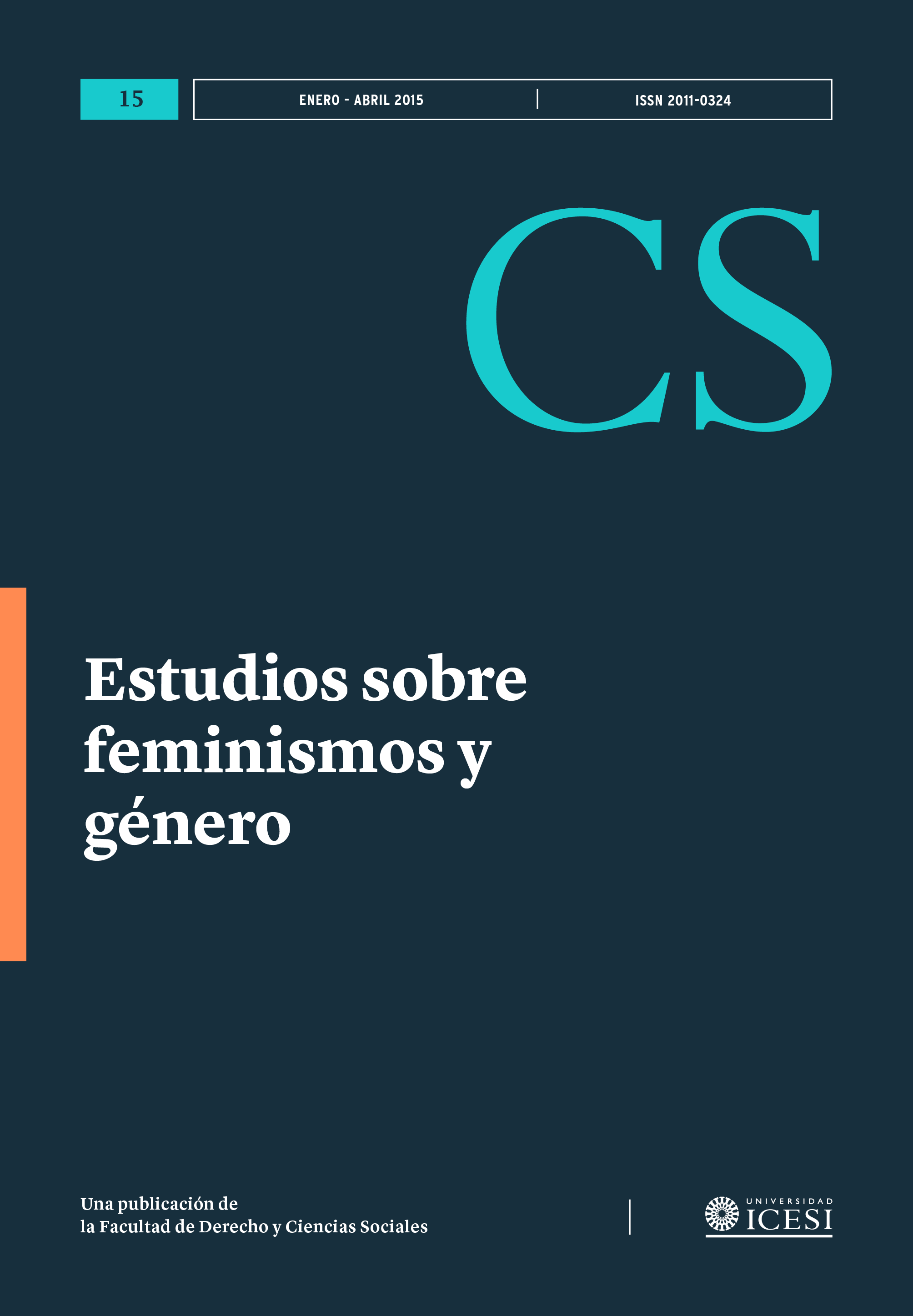The impact of Economic liberalization on Gender equality in Colombia
DOI:
https://doi.org/10.18046/recs.i15.1963Keywords:
Economic liberalization, Employment, Gender equality indicators, WomenAbstract
This paper aims to analyze the impact of the economic liberalization on the performance of gender equality indicators in Colombia. The examination includes multiple dimensions such as access to labor market, schooling, health services and political participation. As a resource it was used the database of the United Nations, as well as the statistics of some Colombian government entities. The results indicate that the opening to foreign markets brought new opportunities for women to participate in the labor market and to improve their educational levels. However, they are still victims of gender disparities, which are manifested in terms of income and employment quality. Women have lower wages than men and are more likely to work in the less productive sectors. Educational level and economic autonomy are strongly correlated with health conditions, domestic violence and women´s empowerment. Less educated women have higher fertility and mortality rates, are more vulnerable to domestic violence and continue to have low participation in political parties. Most of the causes of this situation are associated to roles, abilities and skills related to gender. In spite of several policies, there is a considerable necessity of structural changes to fulfill the targets.
Downloads
References
CIFUENTES, L. & RUEDA, M. (2013). II Informe de seguimiento a la implementación de la Ley 1257 de 2008. Bogotá, Colombia: Ediciones Antropos.
DE LA CRUZ, C. (2007). Género, derechos y desarrollo humano. Proyecto America Latina genera PNUD. San Salvador, El Salvador.
FORERO, L. (2012). Indicadores de género en Colombia. Observatorio asuntos de género. Boletín No. 15, 7–15.
GÁLVEZ, T. (2001). Aspectos económicos de la equidad de género. Santiago de Chile, Chile: Naciones Unidas– CEPAL.
GALVIS, L. (2010). Diferencias salariales por género y región en Colombia: una aproximación con regresión por cuantiles. Banco de la República. Cartagena, Colombia.
GARCIA, O. & URDINOLA, P. (2000). Una Mirada al mercado laboral colombiano. Departamento Nacional de Planeación. Bogotá, Colombia.
GAYE, A. & KLUGMAN J. (2010). Measuring key disparities in human development: The Gender Inequality Index. United Nations.
GUARNIZO, C. & HERREÑO C. (2008). Equidad de género en el acceso a los servicios de salud en Colombia. Revista de salud pública, (10), 44–57.
KALMANOVITZ, S. (2000). Oportunidades y riesgos de la Globalización en Colombia. Banco de la Republica. Bogotá, Colombia.
NAJAR, A. (2006). ''Apertura económica en Colombia y el Sector Externo 1990–2004''.Tesis Maestría. Universidad Nacional de Colombia.
OCAMPO, J. Un futuro económico para Colombia.
SEN, A. (2000). La agencia de las mujeres y el cambio social. Desarrollo y Libertad (pp. 233–249). Bogotá, Colombia: Planeta Colombiana S.A.
VASQUEZ, M. & OLARTE T. (2010). Informe de Gestión 2002–2010. Observatorio de asuntos de género. Boletín Edición Especial, 6–32.
Statistical references
ALTA CONSEJERÍA PRESIDENCIAL PARA LA EQUIDAD DE LA MUJER (2012). Lineamientos de la política pública Nacional de Equidad de Género para las Mujeres. Bogotá, Colombia.
BANCO DE LA REPÚBLICA. Banco Central de Colombia. http://www.banrep.gov.co/pibbase–1975
CONPES 161. (2013). Women's Gender Equality
DANE. www.dane.gov.co/files/investigaciones/boletines/educacion/bol_EDUC_2012.pdf
GENDER STATISTICS UNPD: http://genderstats.org/Browse–by–Countries/Country– Dashboard?ctry=170
NATIONAL OBSERVATORY OF VIOLENCE AGAINST WOMEN (2011). Ministry of Health
PNUD (2000). Informe de Desarrollo Humano para Colombia.
THE WORLD ECONOMIC FORUM (2013). The Global Gender Report.
UNITED NATIONS. Human Development Report (2013).
UNITED NATIONS (2013). The Millennium Development Goals Report.
Published
Issue
Section
License
Copyright (c) 2015 Diana Marcela Méndez

This work is licensed under a Creative Commons Attribution-NonCommercial 4.0 International License.
© Reserved Copyright
Material in this publication may be reproduced without authorization, provided the title, author and institutional source is acknowledged.
The content published in Revista CS is distributed under the Creative Commons BY-NC 4.0 Attribution/Recognition-NonCommercial 4.0 International license.
You are free to:
Share — copy and redistribute the material in any medium or format.
Adapt — remix, transform, and build upon the material.
Under the following terms:
Attribution — You must give appropriate credit , provide a link to the license, and indicate if changes were made . You may do so in any reasonable manner, but not in any way that suggests the licensor endorses you or your use.
NonCommercial — You may not use the material for commercial purposes.












